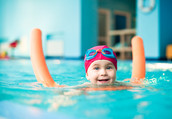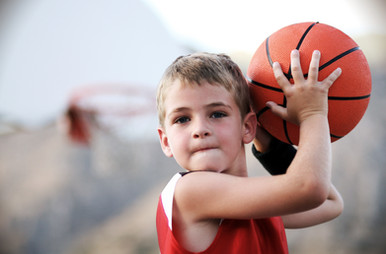How Much and What Kind of Exercise Should Your Kid Get?
- Cathy Dyer

- Jul 30, 2019
- 3 min read
US DHHS Physical Activity Guidelines For Kids

In addition to eating a healthy diet, physical activity for kids is important for improving and maintaining health, and reducing the risk of chronic disease.
Sufficient physical activity for kids aged 6 to 17 is at least 60 minutes per day of moderate-intensity aerobic physical activity, including muscle-strengthening and bone-strengthening activities . For kids 3 to 5 years old three hours per day of activity of all intensities is a reasonable goal (1).
Four of the top 10 causes of death are related to insufficient physical activity and poor diet (2), but only 26% of men, 19% of women, and 20% of adolescents achieve the recommended levels of physical activity (3). Childhood and adolescence is an important time to develop healthy habits to last a lifetime and establish a base of health and well-being.
Kids who are physically active have
stronger muscles
stronger bones
lower body fat
higher levels of cardiovascular fitness
improved cognition and academic performance
reduced symptoms of depression
better sleep
a better chance of being a healthy adult
The 2nd edition of the Physical Activity Guidelines for Americans was published in November of 2018 by the US Department of Health and Human Services and is based on an extensive review of scientific evidence on physical activity and health. The publication provides physical activity guidelines for children and adolescents, adults, and older adults.
Types of Activities
The guidelines make recommendations based on three activity classifications.
aerobic activity: the body's large muscles move rhythmically for a sustained period of time, the heart beats faster and you breathe harder than normal
muscle-strengthening activity: the body's muscles work against a force or weight
bone-strengthening activity: weight-bearing activities that produces a force on bones, promoting bone growth and strength
Intensity Levels
Some activities require more energy. Energy expenditure is expressed in metabolic equivalent of task units (MET), where 1 MET is the rate of energy used while sitting at rest.
light intensity activity: non-sedentary activity requiring less than 3 METs (example: leisurely walking - you can talk and sing while you walk leisurely)
moderate intensity activity: requires 3 to less than 6 METS (example: brisk walking - you are breathing hard; you can talk, but cannot sing while walking briskly)
vigorous-intensity activity: requires 6 or more METS (example: jogging - you are breathing hard; you can talk, but only a few words at a time)

Key Guidelines for Preschool-Aged Children (3-5 Years)
Preschool-aged kids should be physically active throughout the day to enhance growth and development.
Adult caregivers of preschool-aged children should encourage active play that includes a variety of activity types.
Key Guidelines for School-Aged Children and Adolescents (6-17 Years)
It is important to provide young people opportunities and encouragement to participate in physical activities that are appropriate for their age, that are enjoyable, and that offer variety.
Children and adolescents should do 60 minutes or more of moderate-to-vigorous physical activity daily:
aerobic: most of the 60 minutes should be moderate- or vigorous-intensity aerobic activity at least 3 days per week
muscle-strengthening: should be part of the daily 60 minutes at least 3 days per week
bone-strengthening: should be part of the daily 60 minutes at least 3 days per week

References
1. US Department of Health and Human Services. Physical Activity Guidelines for Americans, 2nd edition. Washington, DC; US Department of Health and Human Services; 2018.
2. Centers for Disease Control and Prevention. National Center for Health Statistics: Death and mortality. https://www.cdc.gov/nchs/nvss/deaths.htm
3. Office of Disease Prevention and Health Promotion. Healthy People 2020: Data search - physical activity. https://www.healthypeople.gov/2020/topics-objectives/topic/physical-activity





















Comments